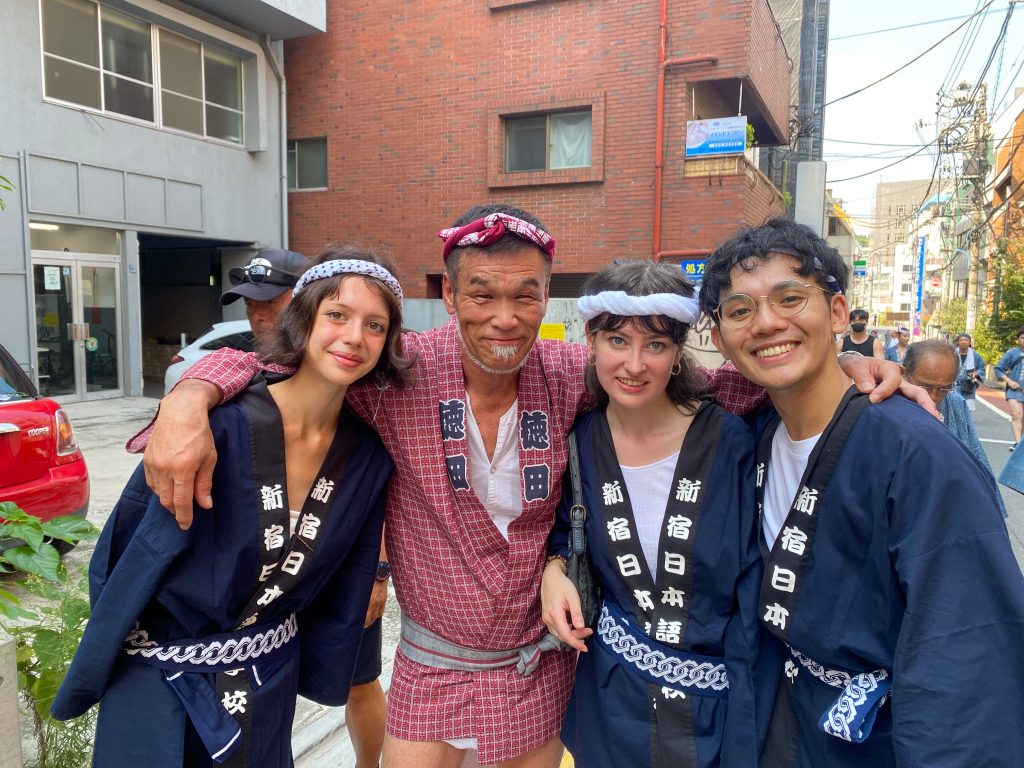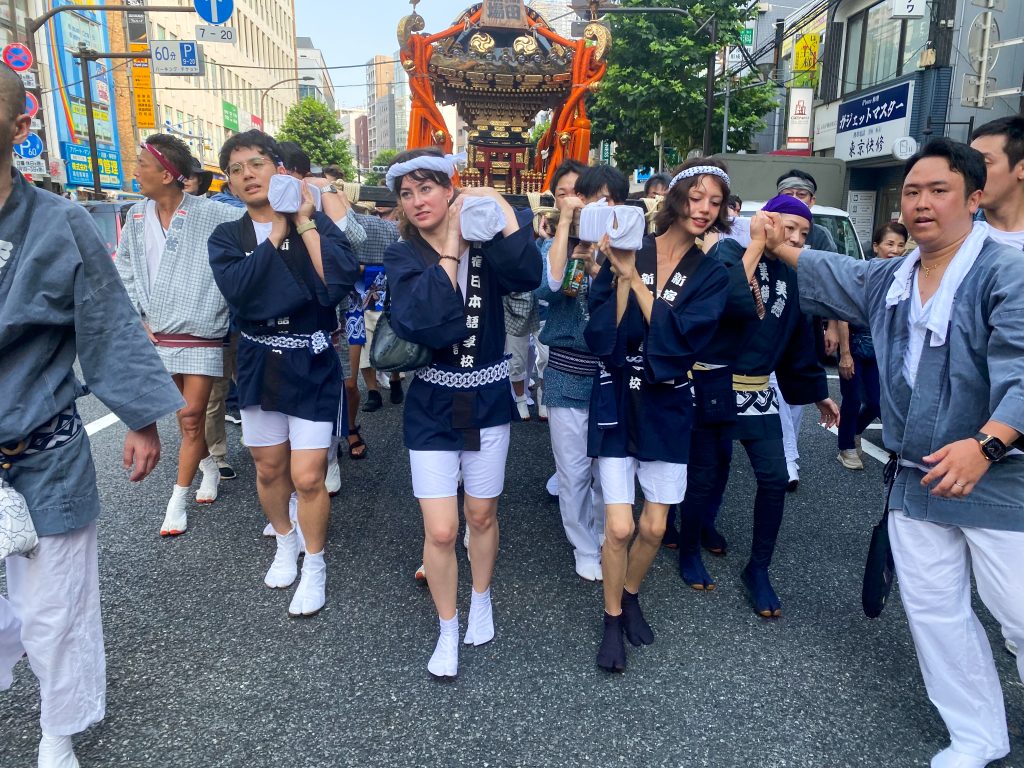
On Sunday, August 31, the grand mikoshi parade took place in Takadanobaba. On this special occasion, our students joined local residents and members of the neighborhood committee to celebrate together.
Our students wore the traditional festival attire embroidered with the school’s name: a happi coat fastened with an obi belt on top, and short festival pants (han momohiki) on the bottom. On their feet were jika-tabi—traditional boots made of thick fabric with rubber soles, separating the big toe from the others, much like tabi socks. Finally, a hachimaki (鉢巻)—a headband tied around the forehead—completed their outfit.
Dressed in this traditional costume, students and staff made their way to the gathering point. The parade began around 1:00 p.m., under a blazing sun. The atmosphere was festive and full of warm reunions: members of the neighborhood committee welcomed the students, helped them tie their hachimaki properly, and guided them to their positions under the mikoshi.
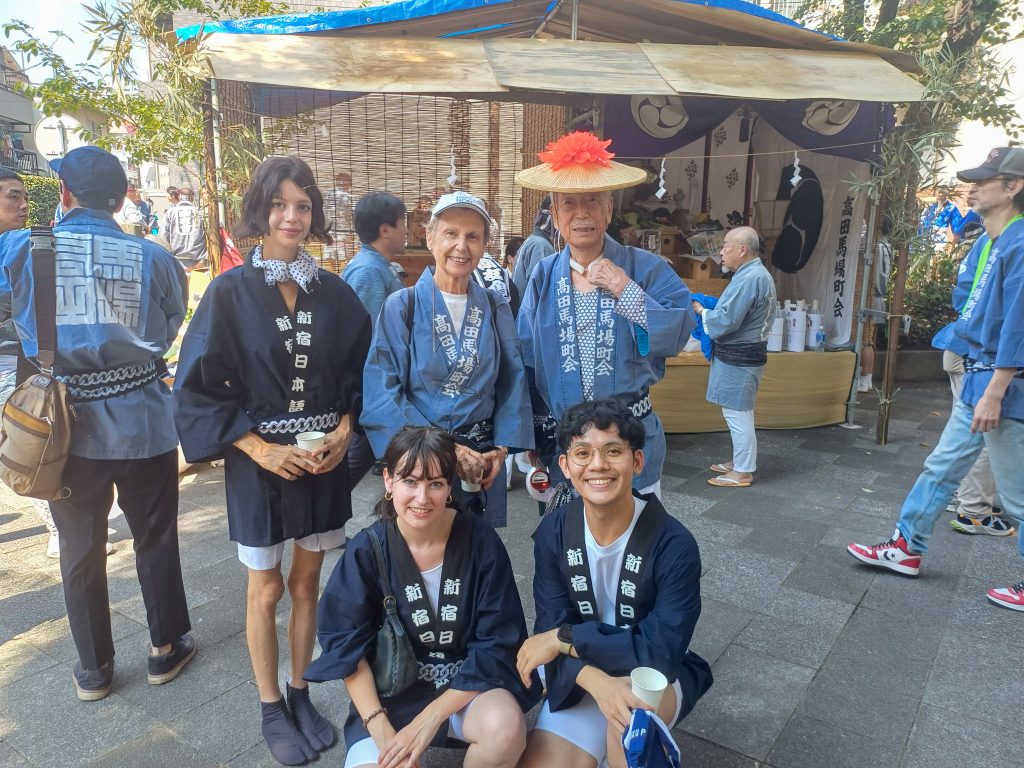
Then came the long-awaited moment: carrying the mikoshi. Volunteers took turns supporting the heavy structure. The closer one stands to the front or center, the heavier the weight. Fortunately, teamwork is key—whenever someone grew tired, another quickly stepped in. Despite the scorching heat and sore shoulders, voices of encouragement rang out, and together the mikoshi moved forward with great energy.
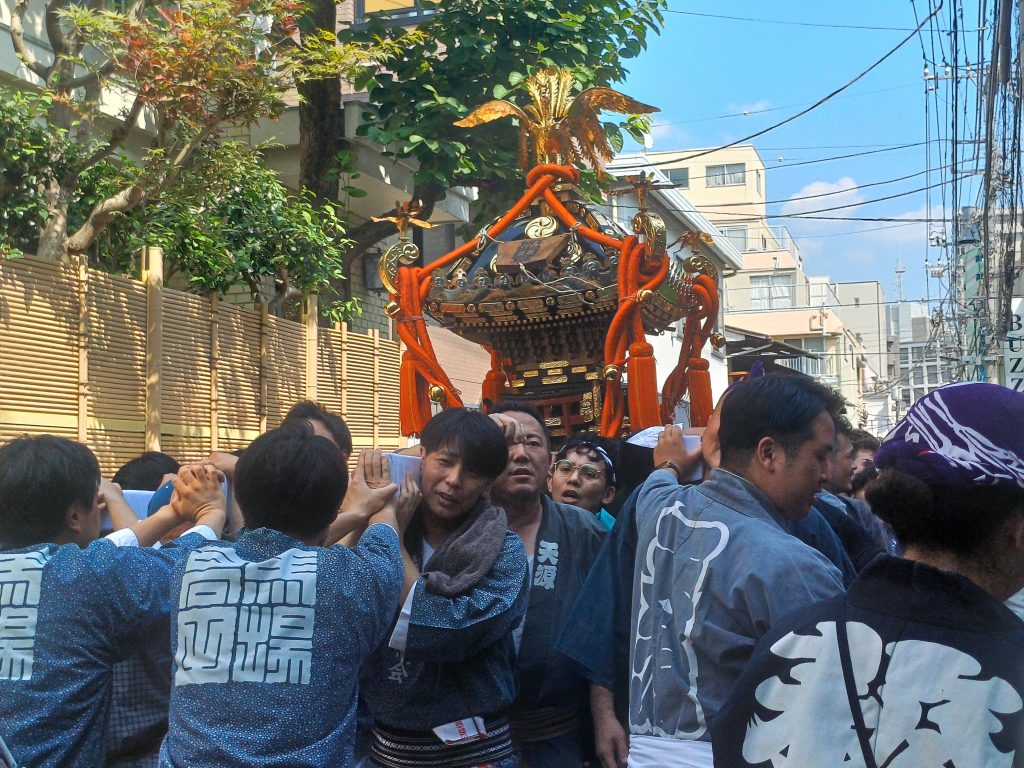
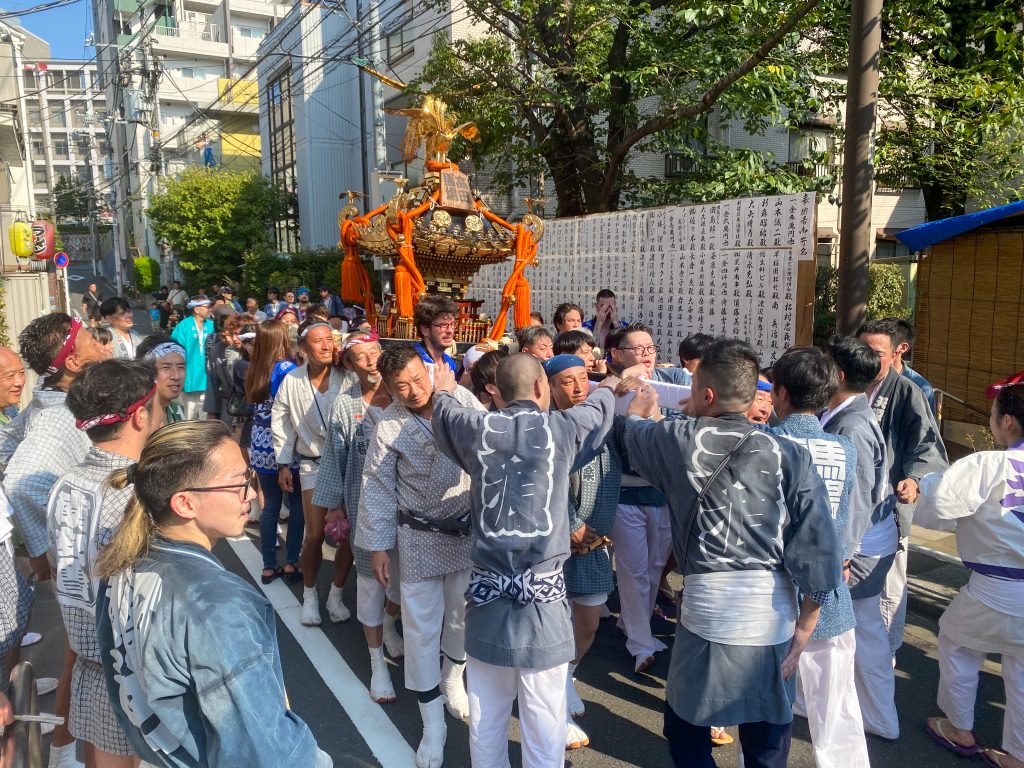
The procession made several stops, each with a much-needed break. Volunteers handed out water, mugicha (barley tea), Pocari Sweat, and even Garigari-kun (ガリガリ君), Japan’s beloved popsicle-style ice treat. These pauses were also a chance to chat, take photos, and exchange practical tips—for example, placing the hachimaki on the shoulder under the coat to reduce the strain of the mikoshi’s weight.
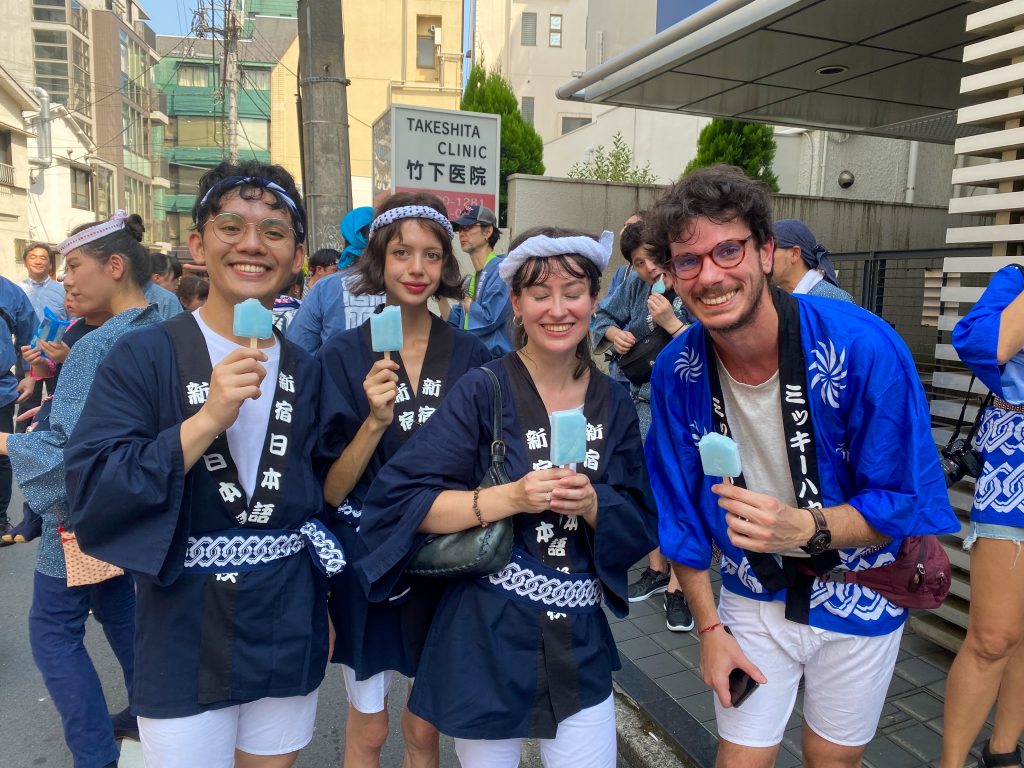
The final stage was the most intense. Our students, positioned at the front, were guided closely by the experienced locals. The heat was harsher than ever, and the last stretch was uphill, but everyone shouted encouragements in unison. Just before reaching the goal, the mikoshi was repeatedly moved backward and forward in a ritual-like dance, prolonging the festive excitement until the very end.
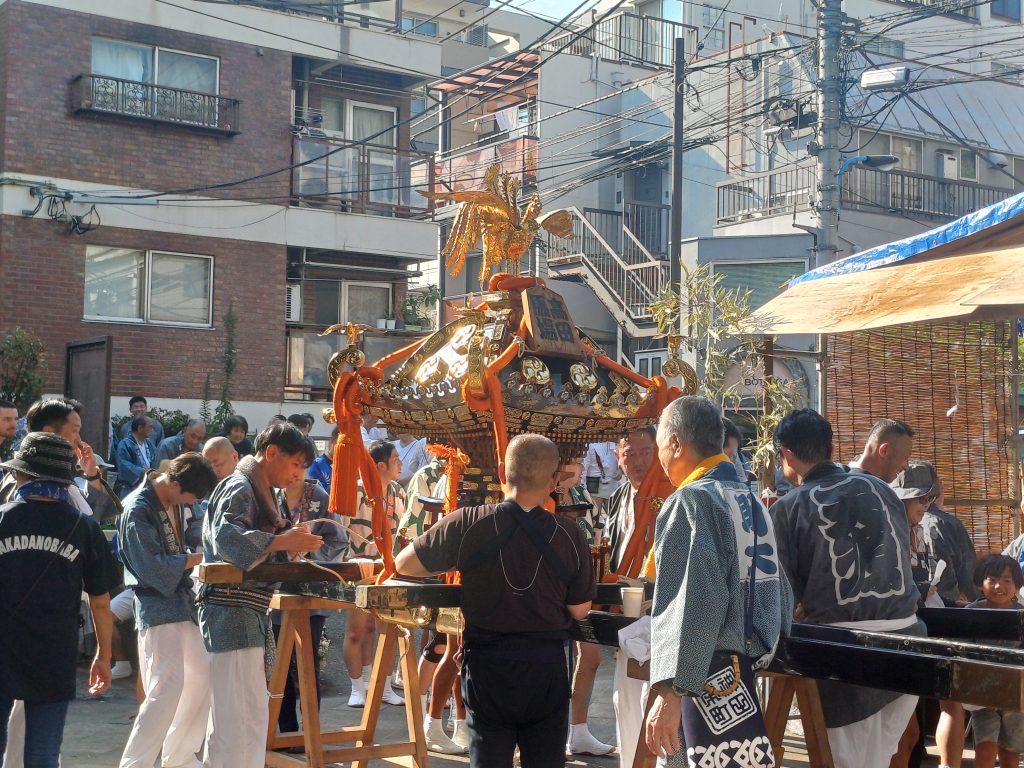
By the time the parade concluded, our students were exhausted but thrilled to have taken part in such a memorable experience. Many were surprised by how heavy the mikoshi was, but all left with unforgettable memories—and the hope of joining again next year!
